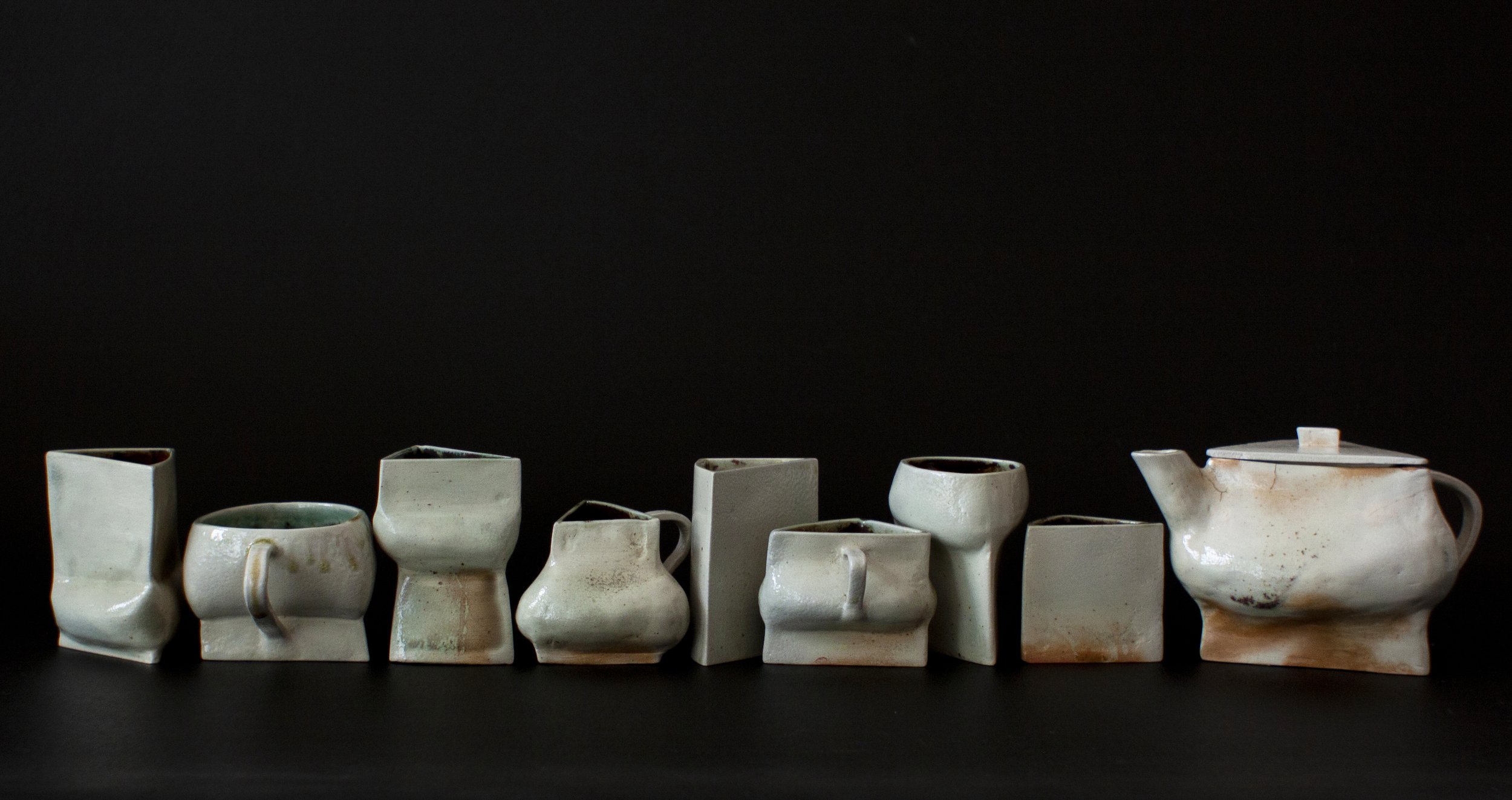
Ceramic work
Ceramic work
The first time I worked with clay was in high school and I absolutely hated it. I wanted nothing to do with it. Even through undergrad I somehow managed to avoid all ceramic classes. A couple years after college I found myself applying for grad school to a glass and science program. Little did I know, the curriculum had changed since I had done my research for the school, and it now included ceramics. I found myself in a graduate ceramics program with almost no prior experience! This was very overwhelming for me. Not only did I not know much about the material, but at this point, I had also convinced myself that I hated working with it. Luckily my classmates were eager to help me learn what clay is all about. One day a colleague was teaching me about the 3 main hand building techniques; coil, slab, and pinch. It definitely helped me understand the material, but there was one method I was keen on never trying again, pinching!
Fast forward 3 years and I am stuck in a place where I cannot make glass. So I pick up some clay and start pinching away. Now I love the pinch method! It took a while to understand how the clay moves as you touch it, but after a lot of practice it started to become second nature. As soon as I touch the clay, my hands know exactly what to do. I now make all of my dishware with this method.
To see how these works come to life press the “Process” link below-
Each piece in this set is made and painted by hand, this makes each one unique. All the painted patterns are different from one another, and each piece is slightly different in shape and size. This dishware collection was made using the pinch method, which leaves a trace of where my hands have manipulated the clay to form each shape giving them a wonderful texture.
Materials: Stoneware
To see how these pieces were made click here
These dishes are available in my store. I am continually adding to this set so check out the shop to see what's new



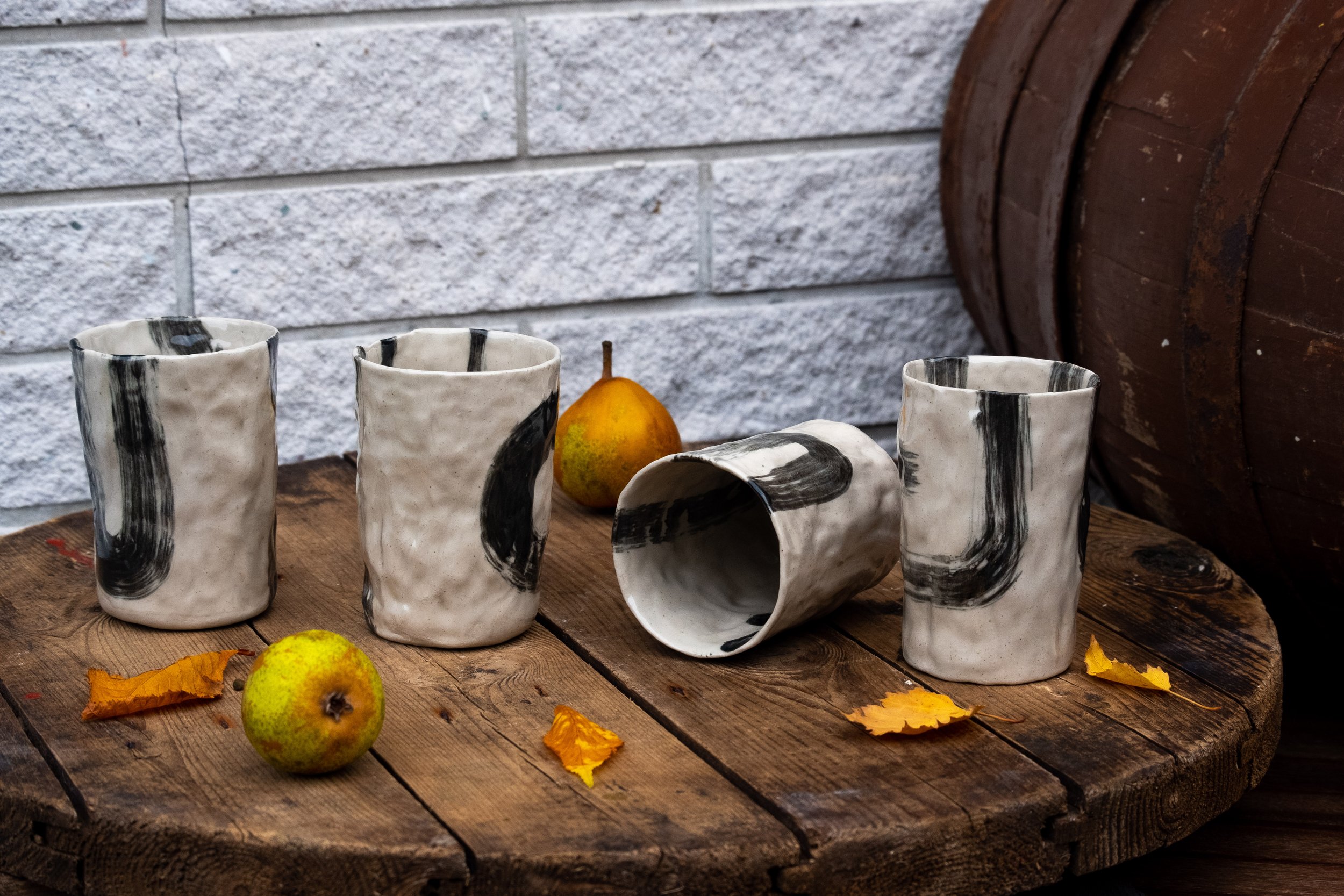





-
These planters have been so fun to make. I make several different sizes. The smallest size is best suited for herbs on a windowsill, they do not have a hole in the bottom to release water so your countertops do not get wet, but be careful not to over water! The medium ones have holes in the bottom and are great for outdoor or indoor use, it comes with an optional small water catcher. The largest size has a built in water catcher which also makes it perfect for indoor or outdoor use.
Materials: Stoneware
To see how these pieces were made click here
these are AVAILABLE in my store and I am continually creating more. checkout my shop before they walk away







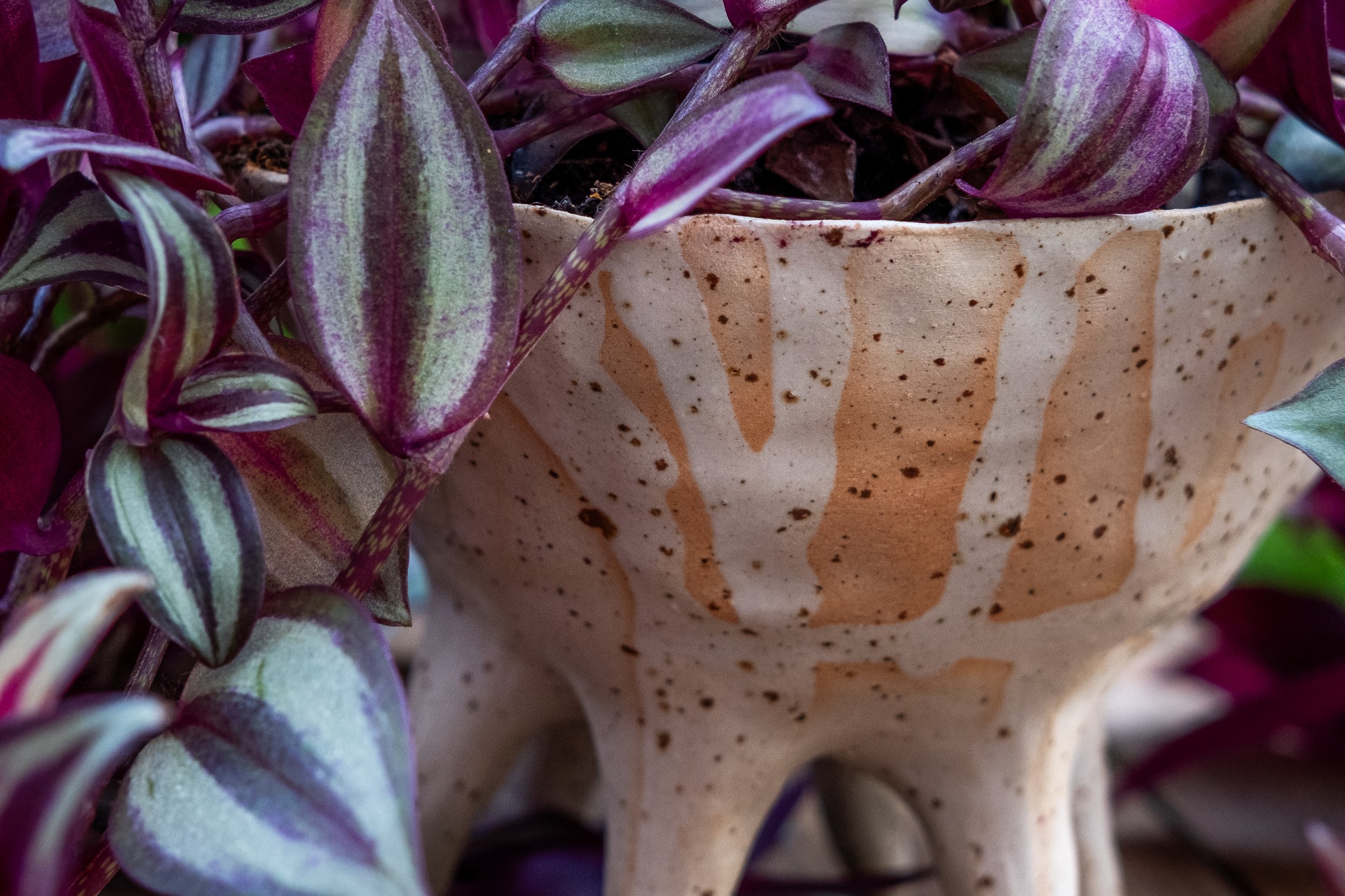

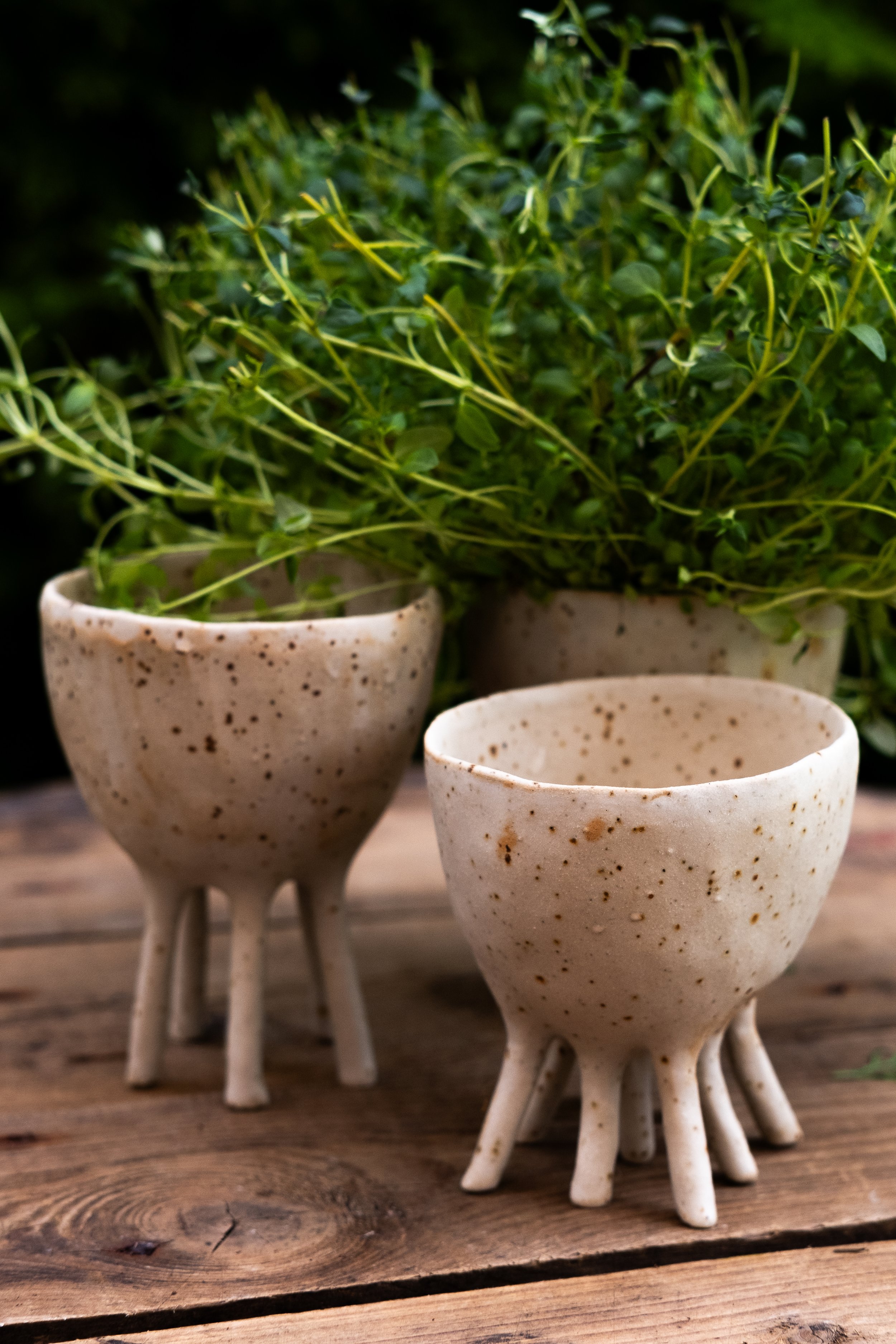

-
The idea for these Interlocking Tea Sets came from a project I had been working on previously. When living in Portugal I stayed in very small spaces. I was working on a series of functional pieces on the throwing wheel that fit into each other to conserve space . However, when the second lockdown arrived in 2021, I was left without a wheel. I love when equipment limitations force your ideas to grow! I was still trying to make pieces that fit into each other, but without a wheel the pieces no longer had to be round, now I could experiment with different shapes and ceramic methods. And, because of the lockdown, all I had was unlimited time to do so.
To take a deeper look into the making process of these tea sets click here
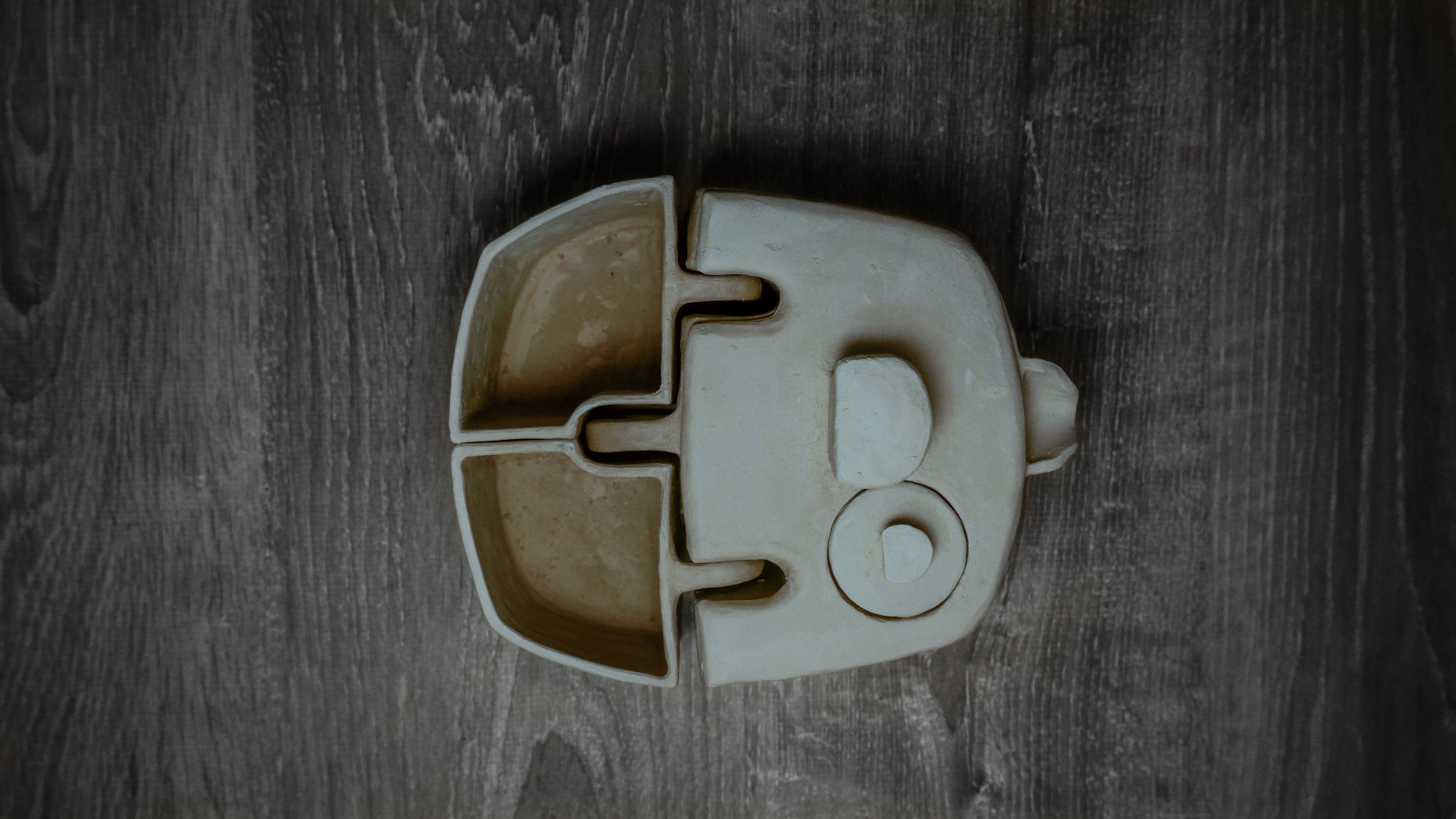







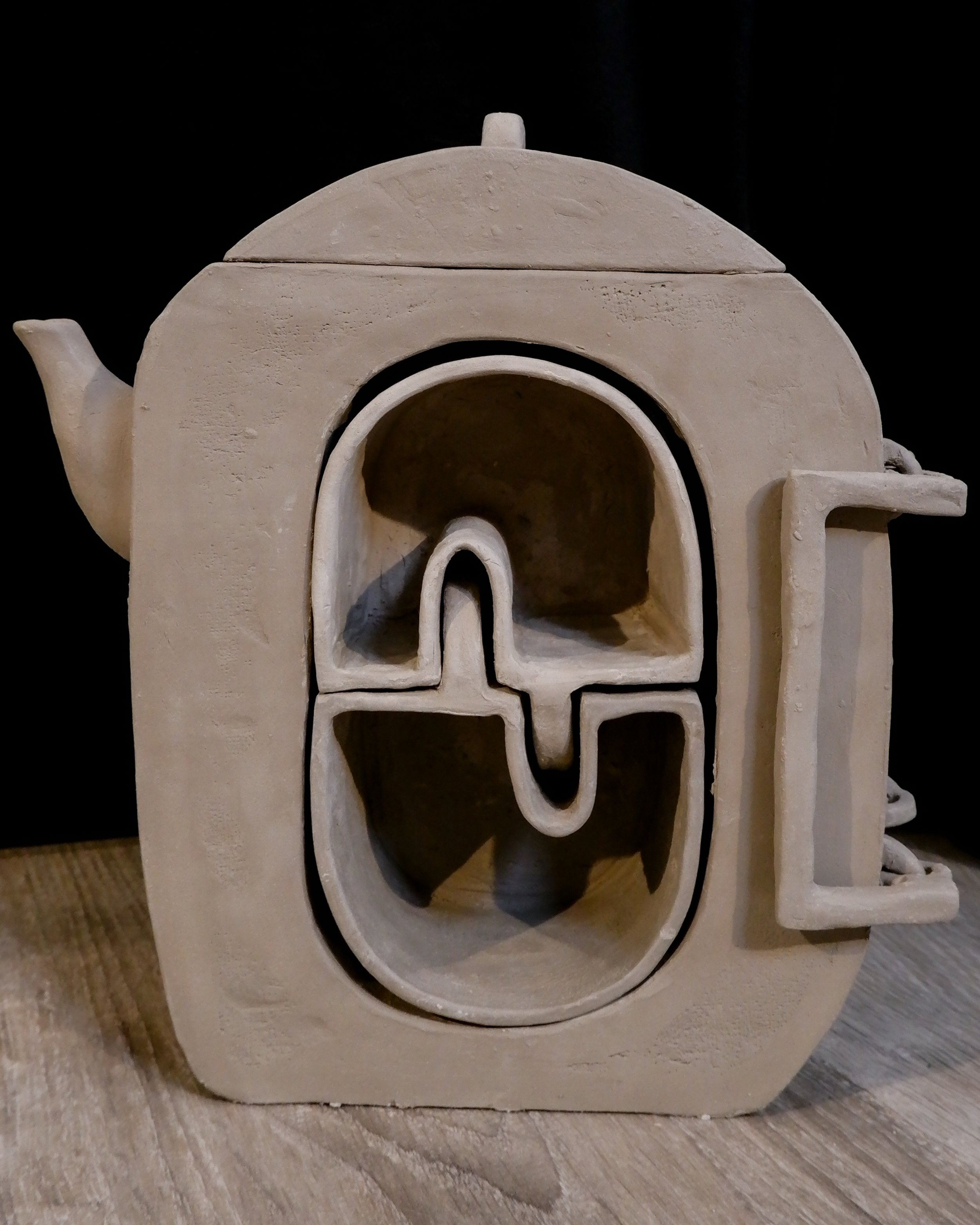





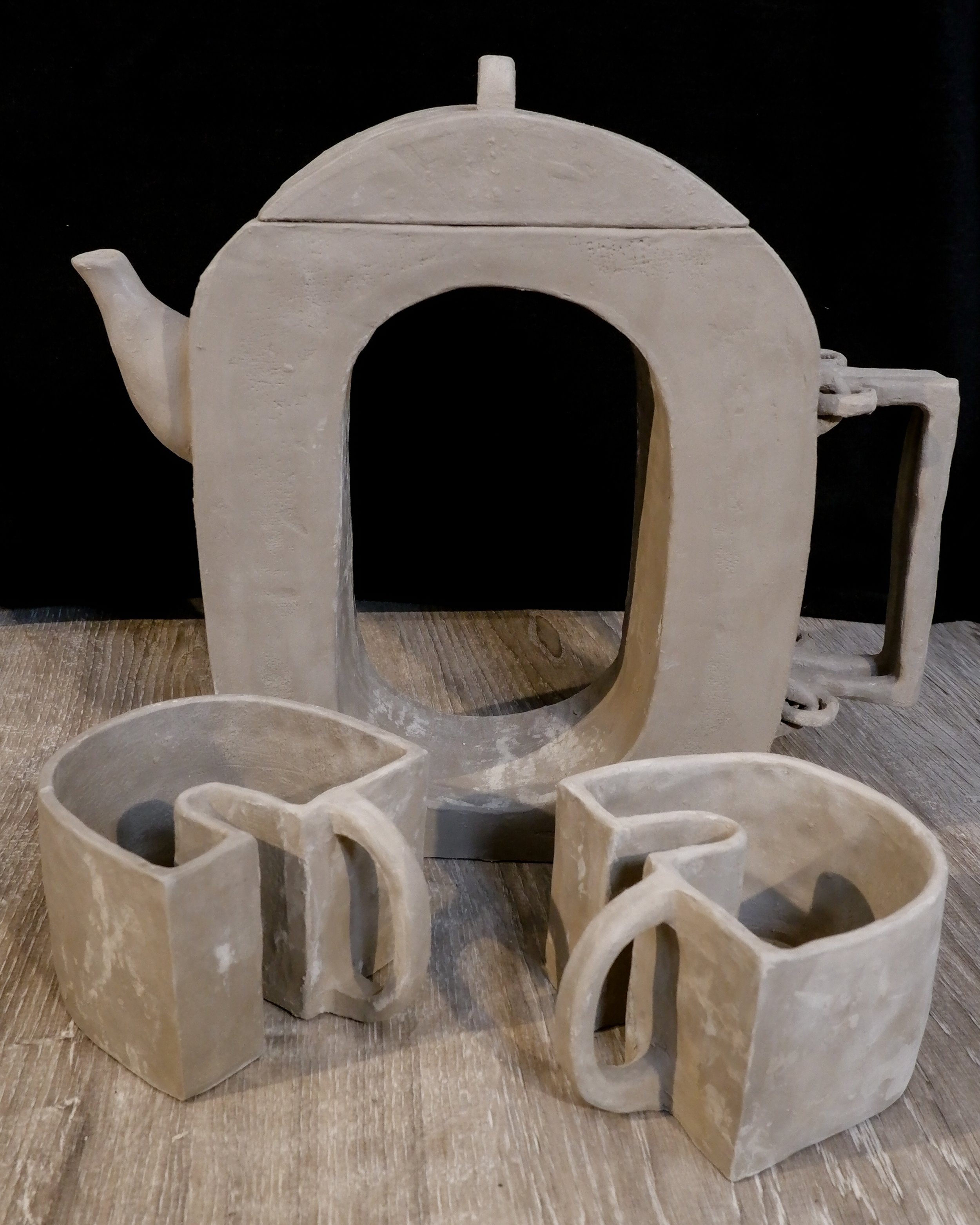

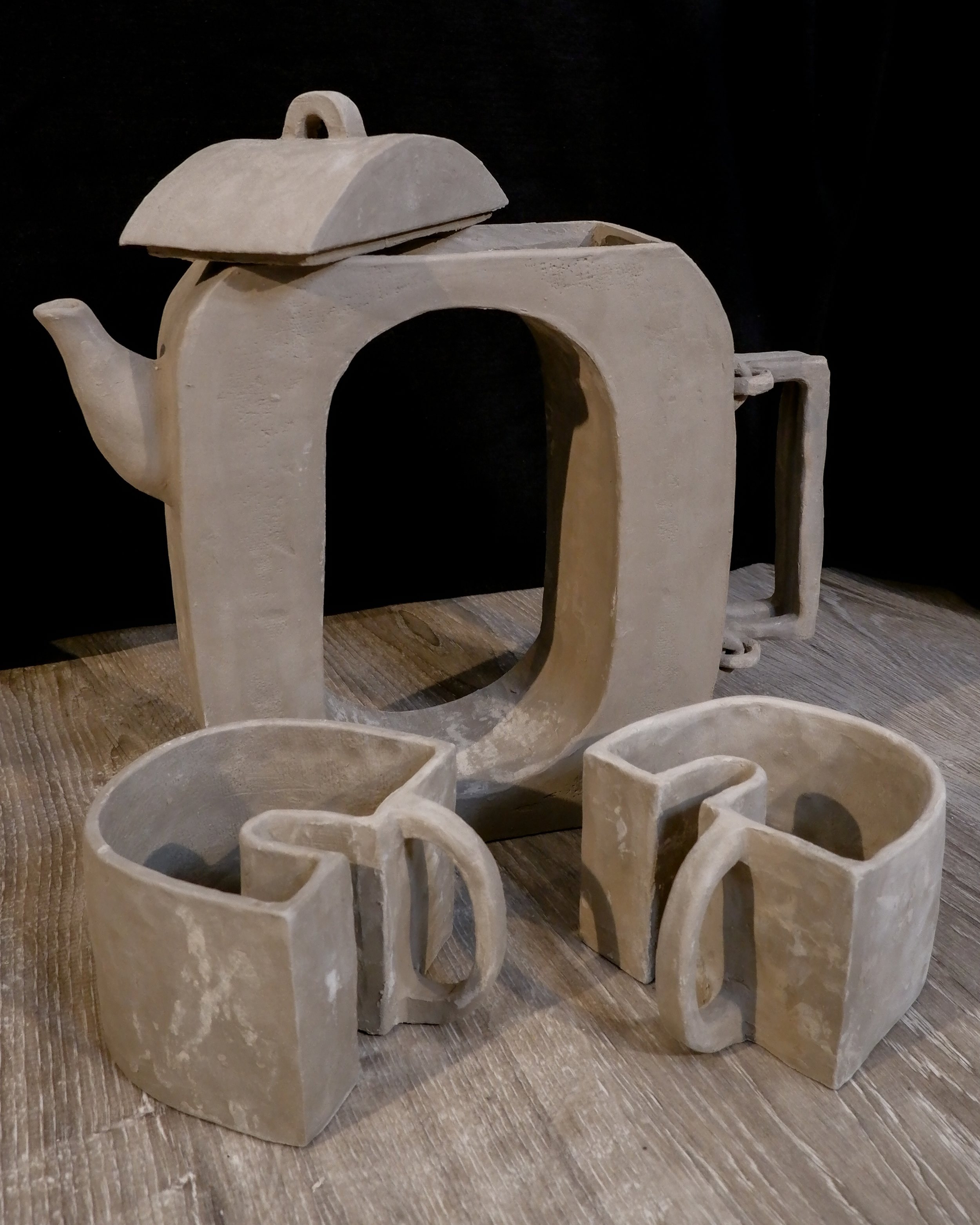

-
This was the first tea set that I made. This set was made during the end of the first lockdown in 2020. I had a very hard time coming up with things to make in clay, I didn’t know the material very well, I only had about three clay working tools and a wine bottle for a rolling pin, but I set out to make something I hadn’t seen before, a tea set made using triangles. This was really the journey of understanding how the clay works and what my limitations were. These pieces were extremely thin, there was a lot of cracking, but in the end almost everything turned out without a crack (minus the tea pot and a couple handles).
This set was fired in a wood kiln with a salt glaze, if you want to see more of the wood firing process click here
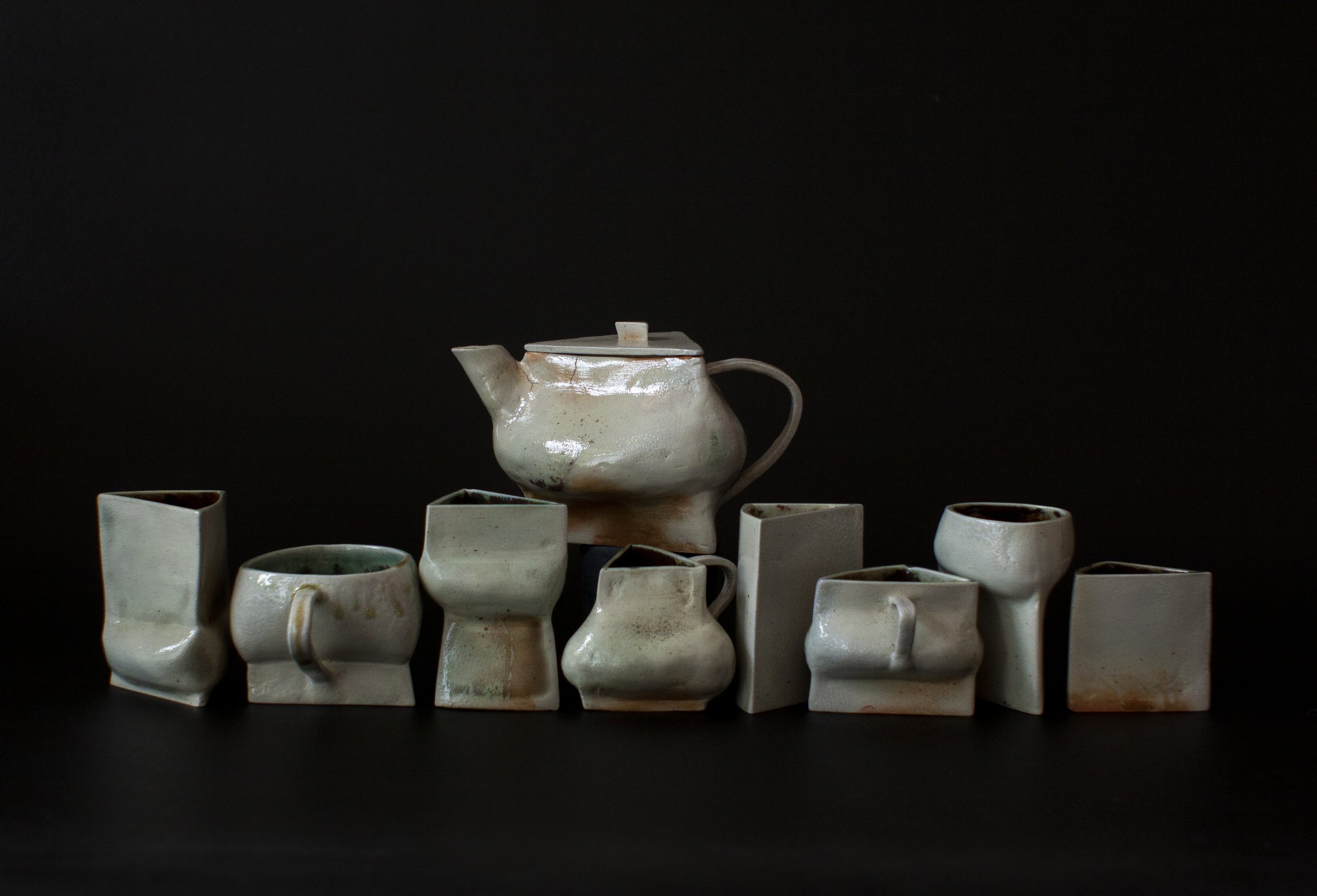











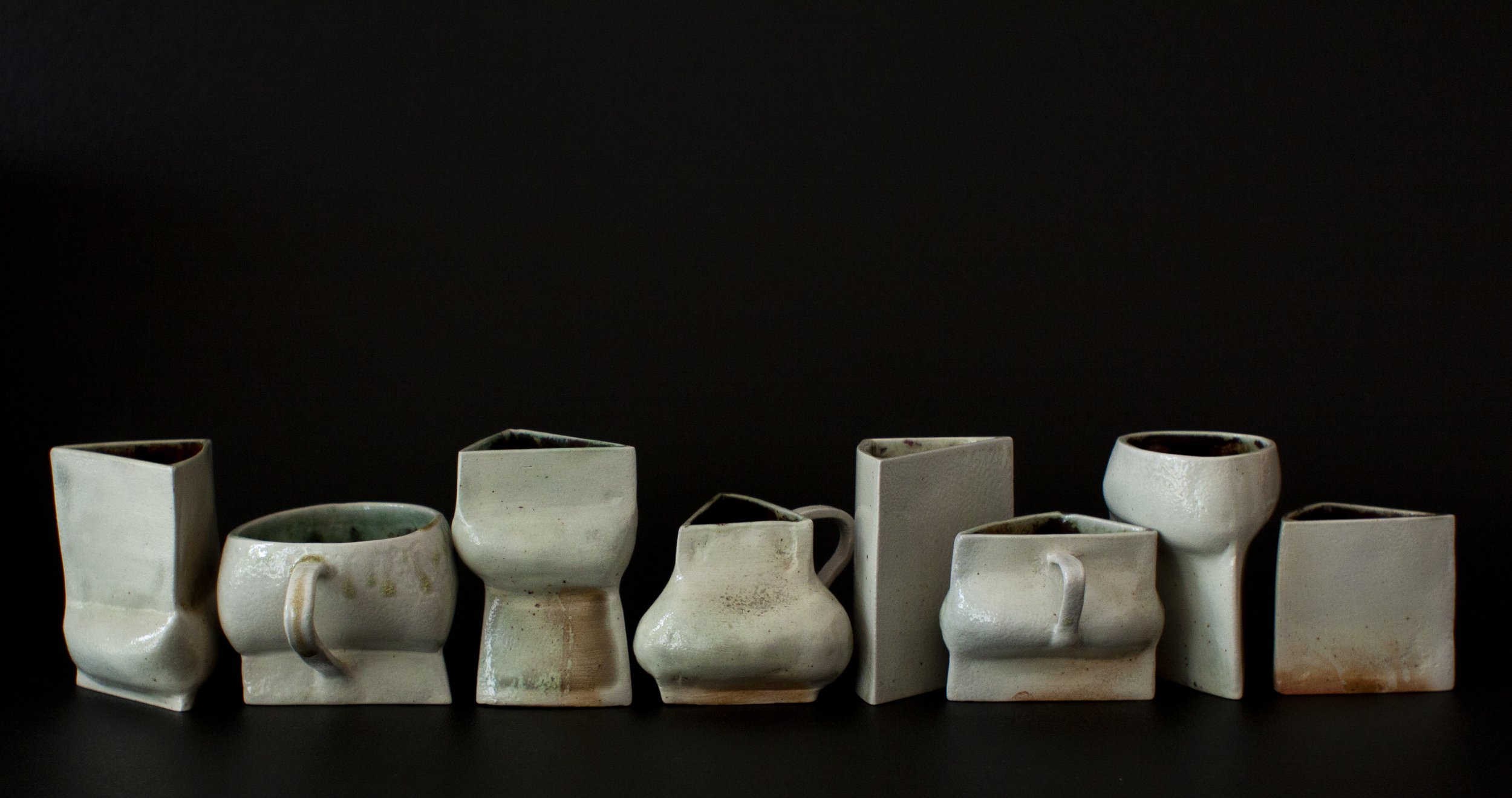



-
I started this piece before the first covid lockdown in 2020, but sadly it was never finished. The glass was originally going to be sewn to the ceramic pieces with copper thread. However the pieces completely dried during the lockdown, before I was able to drill the holes for the copper. In this photo the glass is digitally added. The ceramic pieces were fired in a greek kiln, which is a low fire wood kiln that oxidizes the ceramic pieces, turning them a silvery black.





